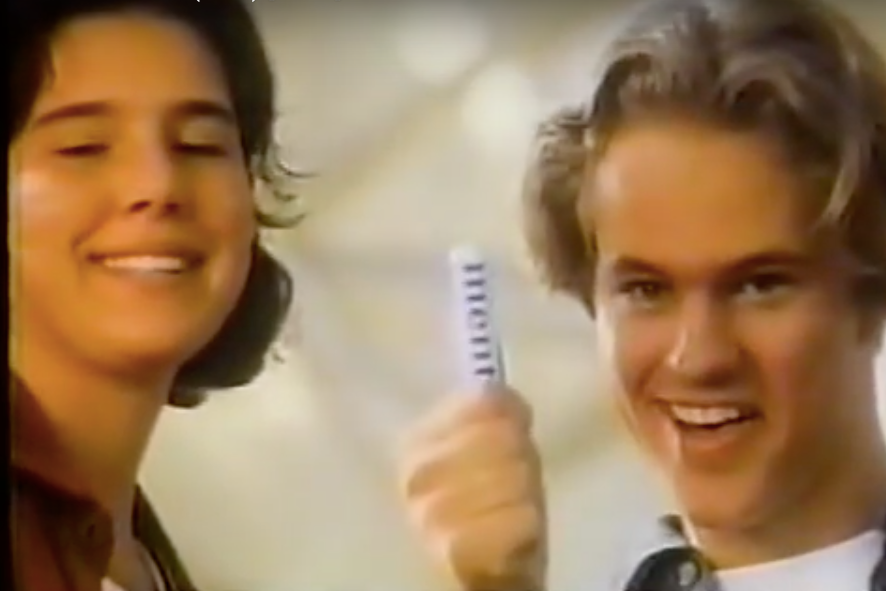It’s never been a better time to be a ’90s kid. The nostalgia-industrial complex has set its pandering sights on young Generation Xers and older millennials, who are lately finding elements of their childhood recycled, repackaged, and sold back to them. Velvet chokers? Check. Revivals of Roseanne and Twin Peaks? Check. Monica Lewinsky in the headlines? In several flavors, whether you’re here for her reassessment of her affair with President Bill Clinton or the upcoming FX dramatization of the scandal.
It makes sense that cultural milestones like Will & Grace and The X-Files are making a comeback, but their importance as pop phenomena means they never fully went away. In contrast, you’ll be amazed—and maybe a bit horrified—by all the stuff you didn’t realize you’d forgotten, scraps of songs and situations that wormed inside your brain and laid there, dormant, until now. If you want to mainline the ’90s until everything around you looks like Skip-Its and Austin Powers asking if you’ve Got Milk, a kind of time travel does exist—and it’s been around since before the current onslaught of reboots. On YouTube, you can delight—or wallow—in the pop culture detritus through surprisingly addictive compilations of that decade’s TV commercials.
“I remember this,” I said over and over to my husband recently while we watched ads from ABC, Fox, and Nickelodeon. I reminisced about how happy the dorkily upbeat Mentos jingle made me and how charming I’d found the Dum Dums lollipops’ a cappella ditty, accompanied by the kind of jittery, squiggly, neon-and-pastel animation made popular by early MTV. Naturally, there were a few What were they thinking? moments, like a commercial for a “peeing” doll called Magic Potty Baby. We paused a video after a McDonald’s ad mentioned “the ozone layer” to go back and make sure we’d heard right. And it was almost jarring to revisit an era of children’s entertainment before the anime invasion. It was a great social watching experience, bringing out stories and memories and all the commonalities a monolithic media ecosphere produced once upon a time. As media continues to fracture, ’90s kids might well be one of the last generations to enjoy universal cultural touchstones like The Simpsons and that Hostess ad where a Claymation shark in pursuit of a chocolate cupcake propels a woman into the air and asks, “Hey, where’s the cream filling?” They’re both immortal, but the AV museum containing the Hostess shark has more than 146,000 views and was made by a YouTube user named Sir Cringe.
These commercial compilations are all over YouTube, suggesting that there’s an interest in watching them even as they get easier to weed out through premium subscriptions, episode purchases, and torrents. The 80sCommercialVault channel, for instance, has hundreds of videos from the ’70s, ’80s, and ’90s (with an accumulated 25 million views). Some videos are edited with an eye toward a certain effect, like Sir Cringe, who aims to deliver face-twisting content, like musical displays of earnestness. Other videos aim for pure nostalgia. The most revealing compilations are blocks of TV on a single date and channel recorded on VHS that strip out the show. This video, of the ads that aired on Nickelodeon on Dec. 11, 1993, offers an archival snapshot of the Saturday night SNICK aspirational culture: tentlike Levi’s pants, primitive CGI, a bizarre game based on a vomiting line cook (Eat at Ralph’s), and a sea of uninterrupted whiteness you’d find nowhere south of the North Pole.
The information superhighway, as we once called it, is still seen by many as shoving people into the future and laying waste to many an industry, like the postal service and car manufacturing. Technological progress has also given us new forms of communication and self-expression, as YouTube can attest. But the internet, or at least recalcitrant pockets of it, is still whatever people want it to be. As the popularity of these ancient commercial compilations illustrates, as long as grown-ups look back fondly on their childhoods, it’ll never not be a wayback machine.
